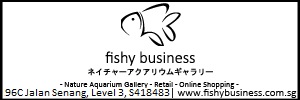Most of the killies of South America are annuals, except for those still being called Rivulus.
All Nothobranchius species are annuals.
Most Fundulopanchax are semi-annuals or annuals, but you may need to ask or look them up to find out.
The distinction is that they come from areas that have rain cycles that allow their habitats to dry out nearly every year. As a result, they have evolved a survival strategy that allows their eggs to rest in the mud until the rainy season returns. This "dry" diapause for the eggs is the unique thing distinguishing them from the plant spawners or crevice spawners.
Non-annual eggs often can be kept in damp peat, and shipped that way. The extra oxygen seems to retard hatching a bit, so some folks use this as a way to get all of a batch of eggs to mature and hatch the same day. Most Aphyosemions will hatch in the peat if left too long. Some Fp. also can be uncertain and will hatch in the peat if left very long.
HTH
Wright
01 760 872-3995
805 Valley West Circle
Bishop, CA 93514 USA










 Reply With Quote
Reply With Quote





Bookmarks